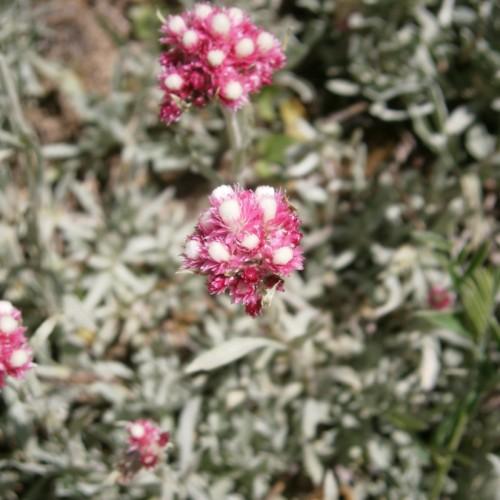
Rosy Pussytoes
Antennaria rosea subsp. arida
Watering:
Frequent
Hardiness Zone:
Flowers:
Flowers In Summer
Sun:
full sun
Soil:
Sand
Leaf:
Yes
Growth Rate:
Low
Drought Tolerant:
Yes
Salt Tolerant:
Yes
Care Level:
Medium
watering
Newfoundland Pussytoes should generally be watered once a week, unless the weather is particularly hot or dry. In that case, the plant should be watered twice a week, or 2 smaller amounts divided over the week. To water this species of plant, you should use a deep and infrequent watering technique to thoroughly wet the soil to a depth of 8-10 inches. This species is fairly drought-tolerant, so you should only water if the soil feels dry.
sunlight
Newfoundland Pussytoes (Antennaria pulcherrima subsp. eucosma) thrive in sunny locations, preferring full-sun exposure for most of the day to keep the leaves vibrant and encourage blooming. If growing this plant in a garden, make sure that the location gets several hours of direct sunlight every day, usually 6-8 hours per day is best. During the hottest part of the summer, the plant may benefit from some dappled shade in the afternoon to prevent the leaves from wilting in the intense sun.
pruning
Newfoundland Pussytoes (Antennaria pulcherrima subsp. eucosma) is a hardy perennial that does not require pruning in order to remain healthy. If desired, slight pruning may be done during the late winter or early spring months. This will help to give the plant a more compact form, encourage fuller foliage and also delay flowering. Lightly prune back the foliage to the desired level with garden shears and discard any dead or diseased growth. Since pruning is not necessary for this plant, an individual can stop whenever they’re happy with the appearance of the plant. Pruning should be done moderately for a healthier, more tidy and attractive look. Pruning back the Newfoundland Pussytoes will also stimulate growth and promote a more robust flowering.
